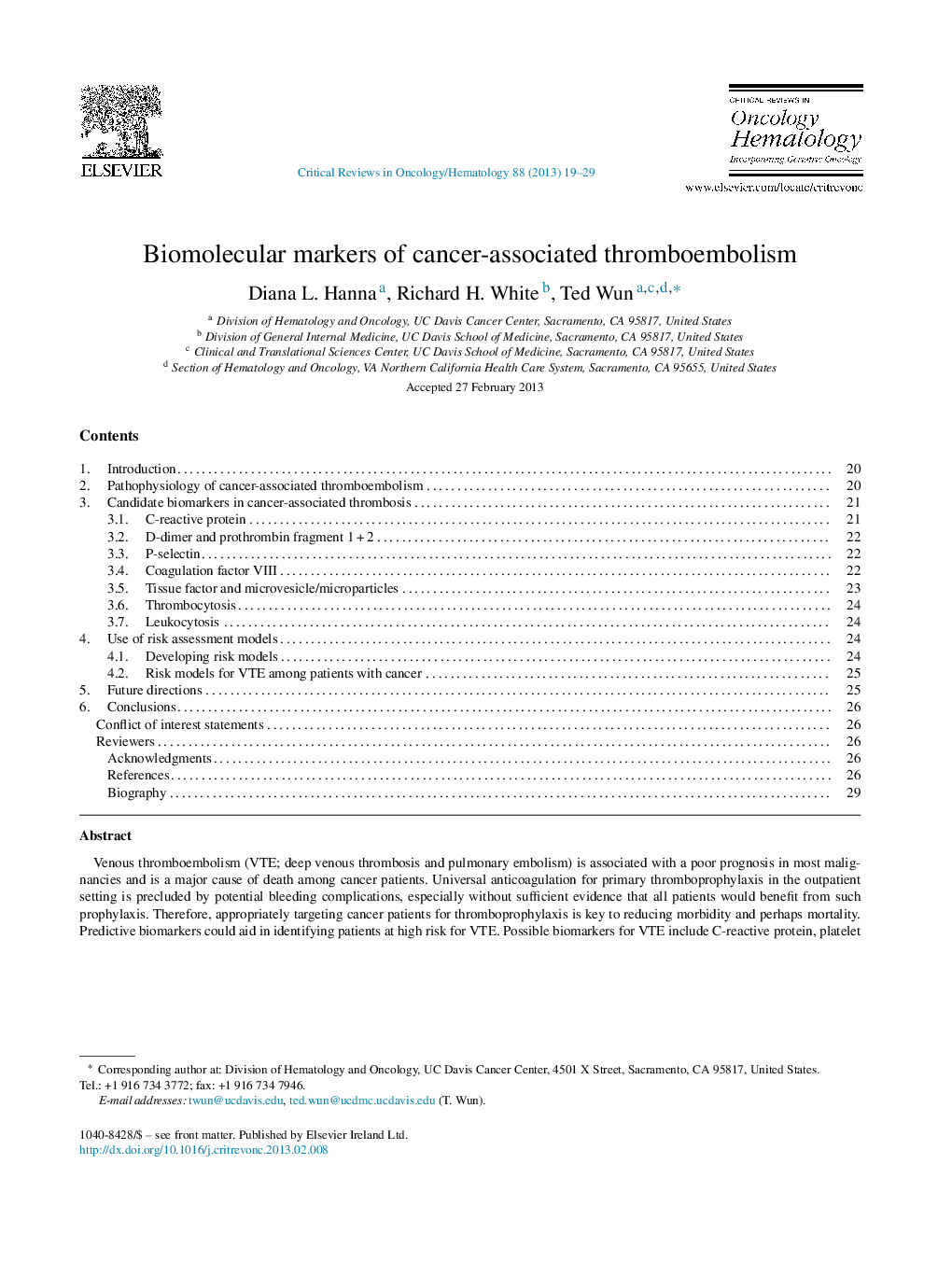| Article ID | Journal | Published Year | Pages | File Type |
|---|---|---|---|---|
| 3328844 | Critical Reviews in Oncology/Hematology | 2013 | 11 Pages |
Venous thromboembolism (VTE; deep venous thrombosis and pulmonary embolism) is associated with a poor prognosis in most malignancies and is a major cause of death among cancer patients. Universal anticoagulation for primary thromboprophylaxis in the outpatient setting is precluded by potential bleeding complications, especially without sufficient evidence that all patients would benefit from such prophylaxis. Therefore, appropriately targeting cancer patients for thromboprophylaxis is key to reducing morbidity and perhaps mortality. Predictive biomarkers could aid in identifying patients at high risk for VTE. Possible biomarkers for VTE include C-reactive protein, platelet and leukocyte counts, D-dimer and prothrombin fragment 1 + 2, procoagulant factor VIII, tissue factor, and soluble P-selectin. Evidence is emerging to support the use of risk assessment models in selecting appropriate candidates for primary thromboprophylaxis in the cancer setting. Further studies are needed to optimize these models and determine utility in reducing morbidity and mortality from cancer-associated thromboembolism.
